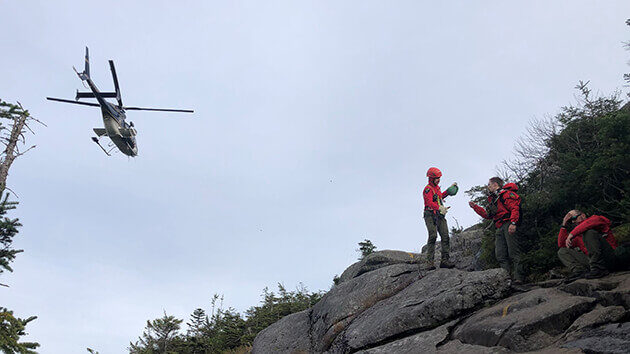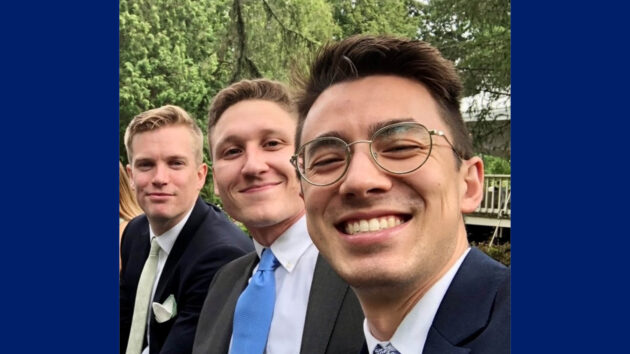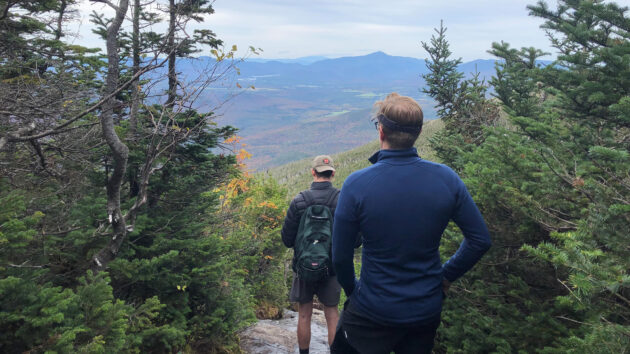Chance Encounter on High Peak Tests Medical Students’ Skills

A group of fourth-year students experienced a true test of their clinical skills in the Adirondack Park recently. John Stone, Kenny Grant, Alec Kurtz and Christine Learned were just 15 minutes from the summit of Algonquin Mountain – the second highest peak in New York – when they heard other hikers mention that someone ahead was injured.
“We rounded the corner of the tree line and saw people standing around a man in a pool of mud below a six-to-seven-foot rock face,” recalled Kurtz, who is senior class president.
While it was unclear what happened, the man, who they soon learned was Tom Flynn, was screaming in pain. The students wasted no time. They immediately called 911 and began a physical assessment.
“Our four years of medical school training just set into motion and we began to systematically go about a physical exam,” said Stone.
They checked his vital signs and looked for contusions or neurological deficits. Given his position, they weren’t sure what he might have injured when he fell, but it was obvious that Flynn had a serious leg injury.
"He had the classic signs of a hip injury. His leg was turned in and shortened and he couldn't extend it. We thought he either fractured his femur or dislocated his hip. We continually checked for pulses in his lower leg and assessed for any signs of internal blood loss," Kurtz said.
It was cold at the top of the mountain, so the students kept him as warm as possible and continued to monitor Flynn’s vital signs and kept him talking to help keep him from going into shock.
“We talked about Upstate New York and eventually we learned that we had something in common – we were Buffalo Bills fans. That definitely lightened the mood and helped the situation deescalate. We could see him become more relaxed,” said Grant.
Their medical knowledge also helped them articulate Flynn’s injuries so park rangers and medevac helicopter personnel were better prepared when they arrived.
They watched as Flynn was lifted off the mountain nearly four hours later. Although it was then too dark for them to complete their hike to the summit, the students said they wouldn’t have done anything differently.
“We like to think anyone would have done what we did and stayed to help,” said Grant.
Stone agreed. “After seeing how our past four years of training came together in that instant, I feel confident we can take control of any situation and make a difference.”
As for Flynn, he’s on the mend after surgery to repair a broken hip, and grateful that a group of aspiring physicians were willing to help a stranger in need.

